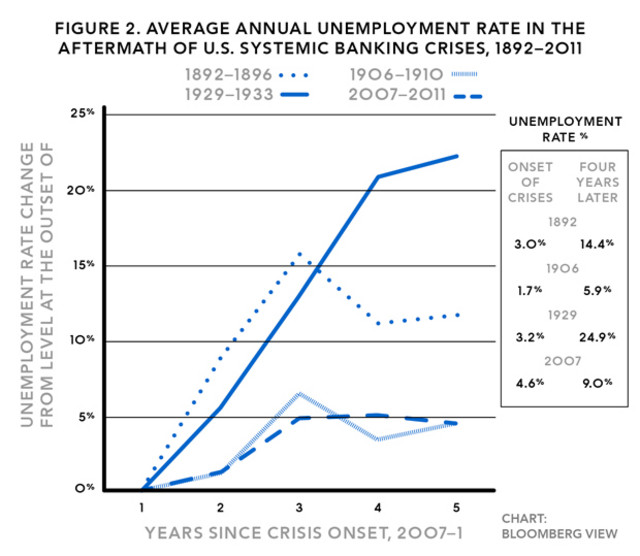One of core economic criticisms that Republican candidate Mitt Romney has leveled against President Obama is that this current recovery is extraordinarily weak by historical standards. Economists supporting the GOP candidate assert that “under the disastrous economic policies of President Obama, economic growth has never been weaker in a post-World War II recovery.”
There is no denying that the US economy is still hurt, what with unemployment at 7.8% and 16% of American families living at or below the poverty line. However, according to this opinion piece by Harvard economists Carmen M. Reinhart and Kenneth S. Rogoff, the president’s economic record has to be viewed in a more favorable light if one makes a distinction between garden-variety recessions and market upheavals versus the full-blown systemic financial meltdowns like the one in 2008-2009.
The co-authors of the well received book This Time is Different: Eight Centuries of Financial Folly examined four earlier systemic financial crises -1873, 1893, 1907 and the Great Depression in the 1930s – and compared them all to the recent financial crisis. Both analyzed GDP per capita growth rates and unemployment across all these crises and the results are presented in the chart below.
So how does the current economic recovery stack up against previous ones after major financial crises? Not so bad, it turns out. “In fact, so far, it has performed better in terms of output per capita and unemployment. This is true even if one excludes the Great Depression,” Reinhart and Rogoff write.
Of course, touting “an economic recovery better than the 1930s” isn’t exactly an ideal campaign slogan for team Obama. Count on Romney surrogates to pound away at the President’s record in the final weeks of the campaign. Still, it’s a bit of perspective that might be useful to investors.





